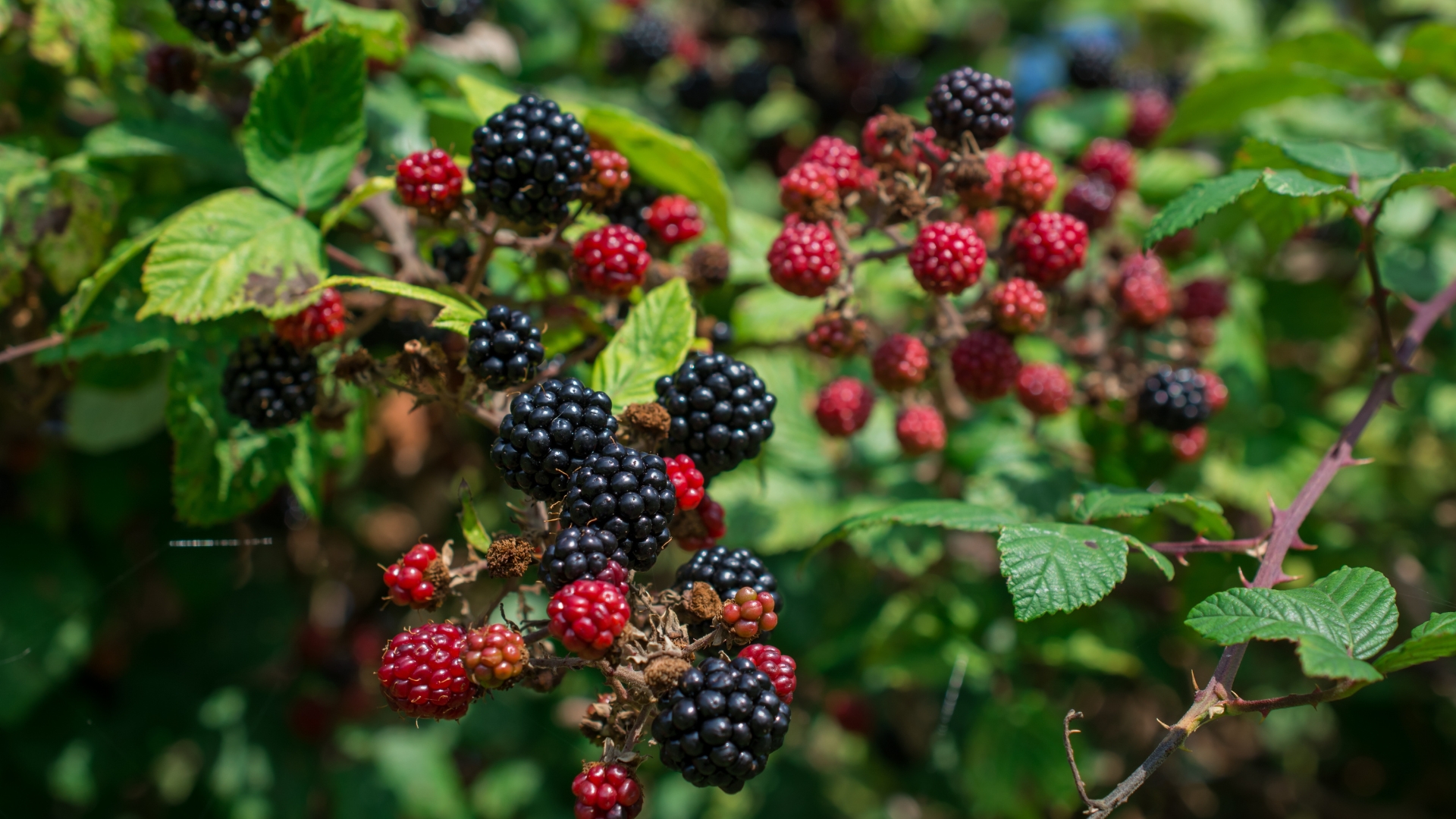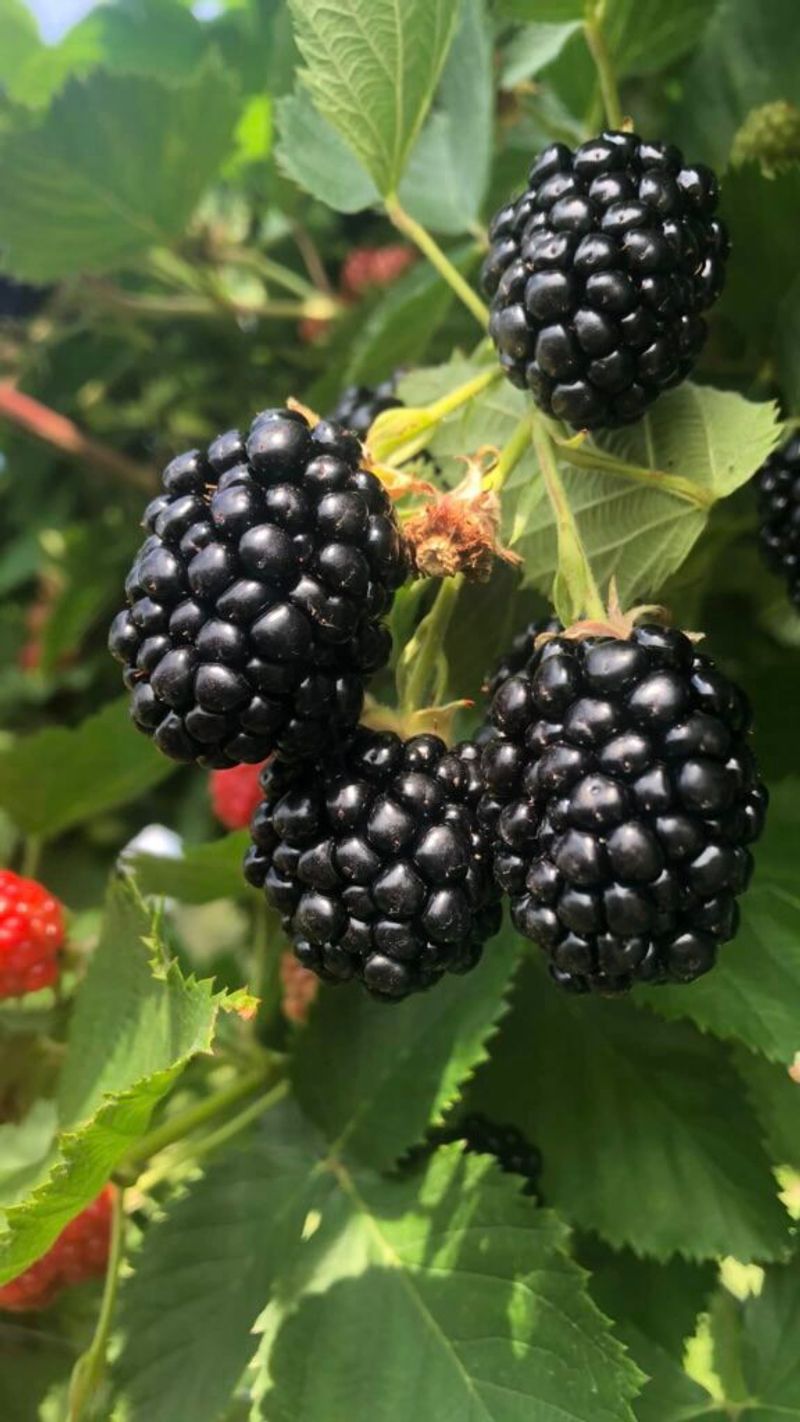Summer’s the perfect time to head outside and see what tasty treasures nature has to offer. From berries to wild herbs, there’s a whole world of edible finds waiting right under your nose.
Even if you’re new to foraging, it’s easier (and more fun) than you might expect. A few beginner-friendly tips will help you get started safely and confidently.
Ready to meet some delicious plants hiding in plain sight?
1. Blackberries
Those thorny brambles along trails hide summer’s sweetest treasure! Wild blackberries pack more flavor and nutrition than store-bought varieties, with deep purple-black coloring when perfectly ripe.
Look for them along sunny forest edges and abandoned fields from July through September. Remember to bring sturdy containers and wear long sleeves – the thorns mean business but the reward is worth every scratch!
2. Chanterelles
Golden trumpets of the forest floor appear like woodland treasure after summer rains. Unlike their dangerous look-alikes, true chanterelles have false gills that run down the stem and a distinctive apricot aroma.
Found near hardwood trees, especially oak and maple, these mushrooms form mycorrhizal relationships with their tree partners. Never harvest without absolute identification certainty – when in doubt, take a spore print or consult an expert mycologist.
3. Mulberries
Urban foragers rejoice! Mulberry trees grow abundantly in cities and suburbs, often dismissed as messy nuisances by those unaware of their bounty. The berries resemble elongated blackberries and range from white to deep purple-black.
Simply shake a branch over a sheet to collect ripe berries in minutes. Stains from their juice are notorious, so wear clothes you don’t mind turning purple – your fingers will definitely show evidence of your harvest!
4. Purslane
Growing between sidewalk cracks and garden beds, this succulent weed contains more omega-3s than many fish oils! The fleshy leaves and stems have a slightly lemony, crisp flavor perfect for summer salads.
Harvest from clean areas away from road pollution and pesticides. Purslane spreads in a distinctive star pattern along the ground, making it easy to identify once you’ve spotted it once. The tiny yellow flowers open only on sunny mornings.
5. Elderflowers
Early summer brings delicate, creamy white flower clusters with an intoxicating fragrance that makes unforgettable cordials and champagne. Elder shrubs grow along forest edges, streams, and neglected corners of parks.
Harvest on a dry morning when fully opened but before they begin to brown. Leave plenty for berries later in the season! The stems contain mild toxins, so remove them before using. Only the flowers and properly prepared berries are edible.
6. Lamb’s Quarters
Often called wild spinach, this common “weed” outshines its cultivated cousin in nutrition and flavor. The dusty blue-green leaves have a subtle powdery coating and taste like a milder, sweeter version of spinach.
Young plants under a foot tall offer the tenderest greens. Steam them briefly or add raw to salads. Their seeds are related to quinoa and can be harvested later in summer for protein-rich additions to breads and cereals.
7. Juneberries
Also called serviceberries or saskatoons, these blueberry lookalikes grow on ornamental trees in many parks and landscapes. The sweet purple-red fruits taste like blueberries with hints of almond from their tiny seeds.
Ripen earlier than most summer berries, hence their name. Birds love them too, so competition can be fierce! The star-shaped flower remnant on the bottom differentiates them from blueberries and makes identification foolproof for beginners.
8. Stinging Nettles
Don’t let the sting scare you away! Wearing gloves to harvest these nutritional powerhouses rewards you with iron-rich greens that taste similar to spinach. The stinging hairs are neutralized completely by cooking.
Seek young plants in partial shade along stream banks and disturbed areas. Harvest just the top 4-6 inches for tenderness. Dry some for mineral-rich tea that herbalists have used for centuries to support health and vitality.
9. Black Raspberries
Nature’s candy! These delicate berries have a hollow center when picked and intense flavor that puts commercial varieties to shame. Less thorny than blackberries but equally rewarding for summer foragers.
Found along woodland edges and old fencerows where they get morning sun but afternoon shade. The canes have a distinctive whitish-blue coating making them easy to spot year-round. Harvest when they pull away easily and are uniformly dark.
10. Milkweed Pods
Before they form silky fluff for monarch butterflies, young milkweed pods make a unique vegetable that tastes surprisingly like green beans with a hint of artichoke. Only harvest from abundant patches, leaving plenty for monarchs!
Collect pods when they’re 1-2 inches long and still firm. They require boiling in at least one change of water to remove bitter compounds. The flower buds earlier in summer are also edible and make beautiful fritters.
11. Wild Strawberries
Tiny treasures hiding in grassy meadows, wild strawberries pack more flavor in their diminutive size than any grocery store giant. The intense sweetness makes finding these gems worth the effort.
Look in sunny meadows and along hiking trails from late spring through early summer. The plants have three-part leaves and white flowers. Don’t confuse with mock strawberries, which have yellow flowers and tasteless fruit pointing upward.
12. Sumac Berries
Those fuzzy red cones on roadside shrubs make the most refreshing wild lemonade during hot summer days! Staghorn sumac (the non-poisonous kind) has fuzzy stems and berry clusters that point upward.
Harvest when bright red before rain washes away the tart flavor. Simply soak in cold water, strain, and sweeten to taste. Always avoid white-berried sumac, which is a different plant entirely and toxic. The lemony flavor comes from vitamin C-rich acids.
13. Chickweed
This tender green creates the perfect summer salad base with its mild, sweet corn-like flavor. The tiny star-shaped white flowers and single line of hairs running along the stem make identification straightforward for beginners.
Thrives in cool, moist areas even during summer months. The whole plant is edible, stems and all. Rich in vitamins and minerals, chickweed has been used traditionally for skin irritations too – try making a cooling summer skin wash.
14. Bee Balm
Native Americans introduced colonists to this aromatic mint family member that makes exceptional tea. The vibrant red, pink or purple flowers attract hummingbirds and beneficial insects to your foraging grounds.
Both flowers and leaves are edible with a complex flavor reminiscent of oregano and citrus. Find it in moist meadows and forest edges. Makes a soothing tea for summer colds and a beautiful garnish for wild food plates.
15. Pawpaws
North America’s forgotten tropical fruit grows wild in eastern forests! With custard-like flesh tasting of banana, mango and vanilla, pawpaws are worth tracking down in late summer.
Look for small trees with large tropical-looking leaves in river bottom forests. Fruits ripen from green to yellowish-brown and yield to gentle pressure when ready. They bruise easily and spoil quickly, which explains their absence from markets despite their incredible flavor.
16. Wood Sorrel
Resembling shamrocks with heart-shaped leaflets, wood sorrel offers a delightful lemony zing to summer foraging adventures. The sour taste comes from oxalic acid, making it perfect for small quantities as a trail snack.
Grows in both woodlands and lawns, often in partially shaded areas. The yellow flowers and seed pods are also edible. Enjoy in moderation, especially if you’re prone to kidney stones, as the oxalic acid content is similar to spinach.

















